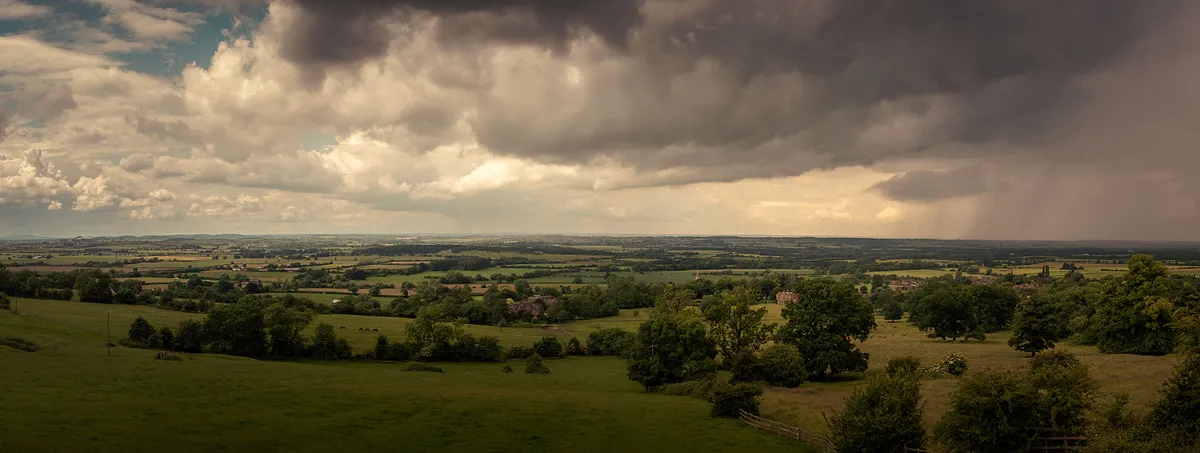British history is steeped in tales of ghostly goings-on with the countryside and ancient monuments and buildings providing the perfect creepy fodder.
Our expert guide investigates the myths and legends and history that surround Britain's most haunted place.
How the British countryside has inspired ghost stories
Ding Dong, Woon Gumpus, Boscawen-un, Zennor, Madron and Mulfra; even the place names of west Penwith, on the far toe of Cornwall, can sound like the syllables of a mumbled arcane rite. The climate and landscape add their own low murmur; when the mist billows in from the Atlantic over rounded granite tors and lonely menhirs, it muffles almost every sensation, leaving only the mind’s eye racing to fill the void and animate the silhouettes.
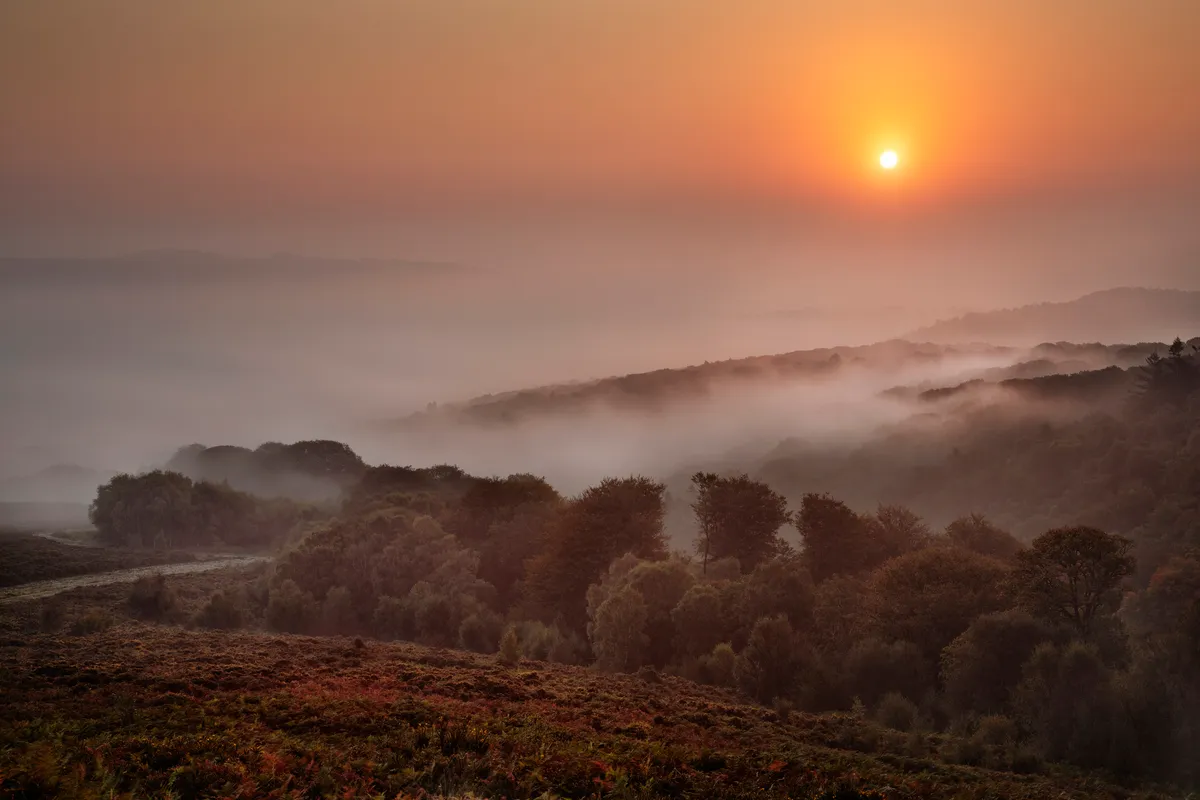
It’s a truth not lost on writers of supernatural fiction and suspense that wild places are perfect locations for their stories, all the more so when they lie close to a body of water. Whether it is the house that stands alone on an island, a wide-open heath, the moor or the mire, they are the natural habitats of both the ghost story and the murder mystery.
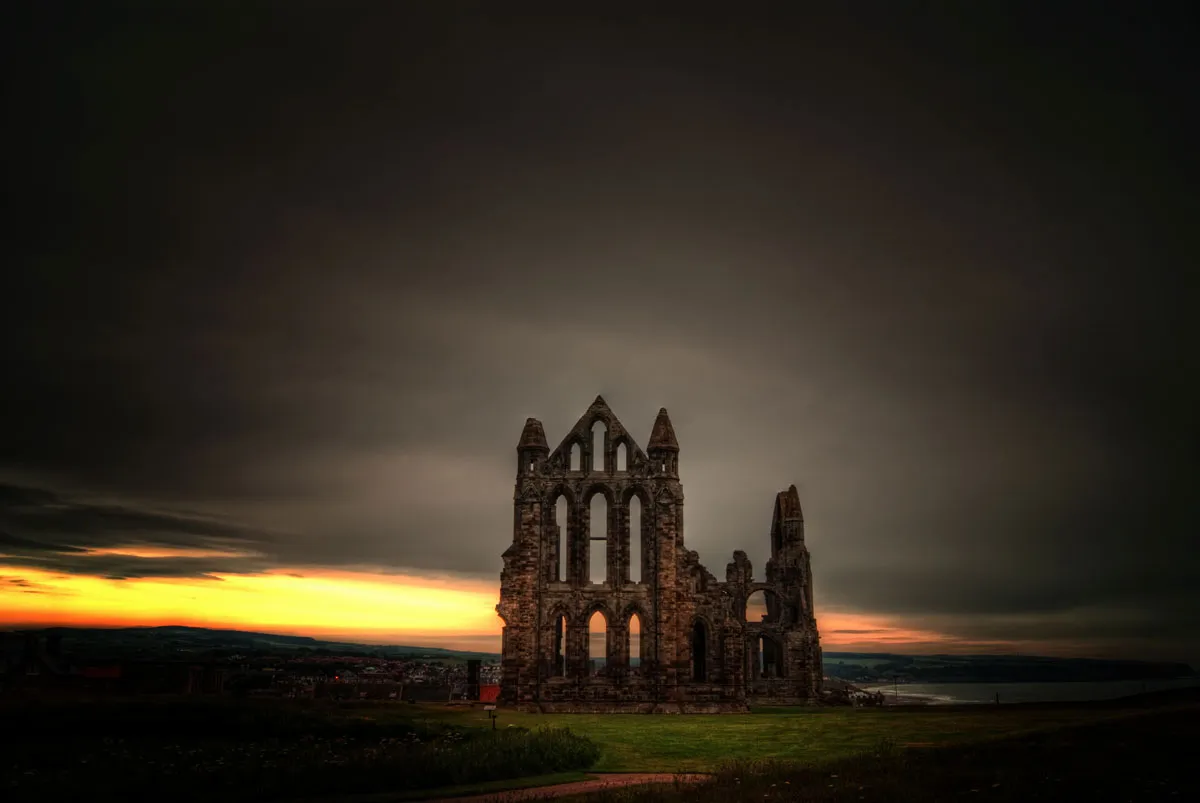
Conan Doyle’s The Hound of the Baskervilles is famously set on a murky Dartmoor, with the added thrill of a near-universal myth in Britain – that of a local supernatural black dog. Susan Hill’s terrifying The Woman in Black is set against the windswept and deserted coastal marshes and offshore islands of Northumberland. It is not the authors who set up a brooding atmosphere for their fiction by using the weather and landscape; it’s there in our minds already.
Where is the most haunted place in Britain?
Veteran explorer of our lost byways Ian Vince gives his verdict…
Penwith is, at its heart, a wild and isolated moorland even at the peak of summer but, like many uplands, it reserves its most macabre and spine-tingling moments for autumn. The days diminish as the season takes hold, traffic on the roads subsides and memories of sun-beaten high days and holidays ebb as the moor returns to the wild once again.
Much of Penwith is a funerary landscape, dotted with tumuli, cairns and cromlechs (or quoits as they are known in Cornwall), and many of these and other Neolithic and Bronze Age features have long been attributed to the fairies. Not gossamer-winged, twinkle-eyed Tinkerbells with a winning smile, but dangerous supernatural entities – piskies or pixies – that were to be avoided at all costs.
The belief in piskies all over Cornwall sought to explain a portfolio of peculiarities and odd phenomena – especially around the mining areas where, if the stories are to be believed, they almost acquired the status of supernatural vermin during the 19th century. Here, between Pendeen and St Just, at Carn Kenidjack and Woon Gumpus Common, the folklore takes a sinister turn – a reflection, perhaps, of the wildness of this stretch of moorland. The carn and the common are where the Devil rides a black horse and hapless mortals must run for a stile to escape his grasp. Dancing lights are seen to this day on Woon Gumpus and Carn Kenidjack, which is known as the ‘Hooting Cairn’ on account of the wail the wind makes through its granite tor.
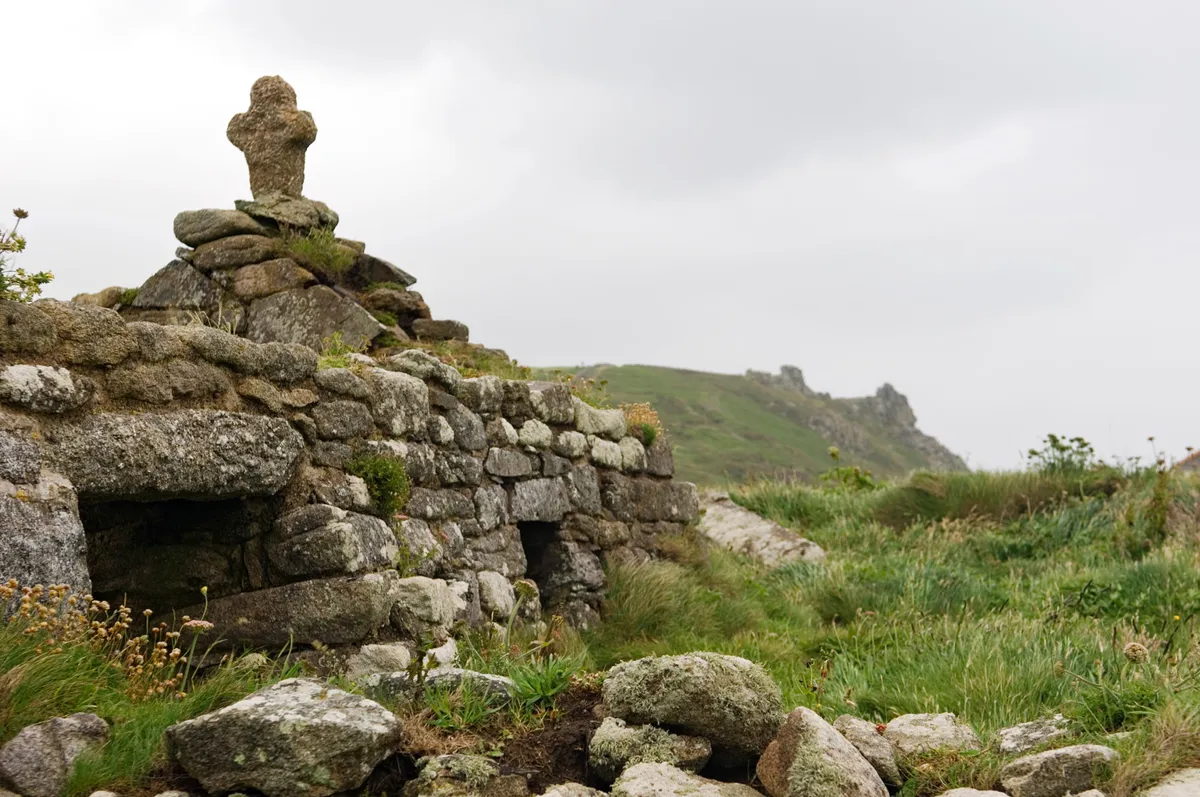
They might not be as obviously malign as the Devil, but stories of piskie interactions with humans tell how they have the power to abduct, befuddle and lead people astray over the landscape. You were more vulnerable if you happened to find yourself on a fairy path, the dead-straight routes that – like their modern equivalents in myth, the ley lines – connect the fairy forts with their various tumps and tumuli.
I have found myself bewildered in the wilderness of Penwith on a number of occasions and I’m a competent map reader. On one occasion walking over Caer Bran, it went much further than any shortcomings in my sense of direction can account for. My inner suggestible self was gripped not only by disorientation, but a sense of foreboding I had never experienced before; Caer Bran is, in Cornish legend, the home of the Pobel Vean – the little people.
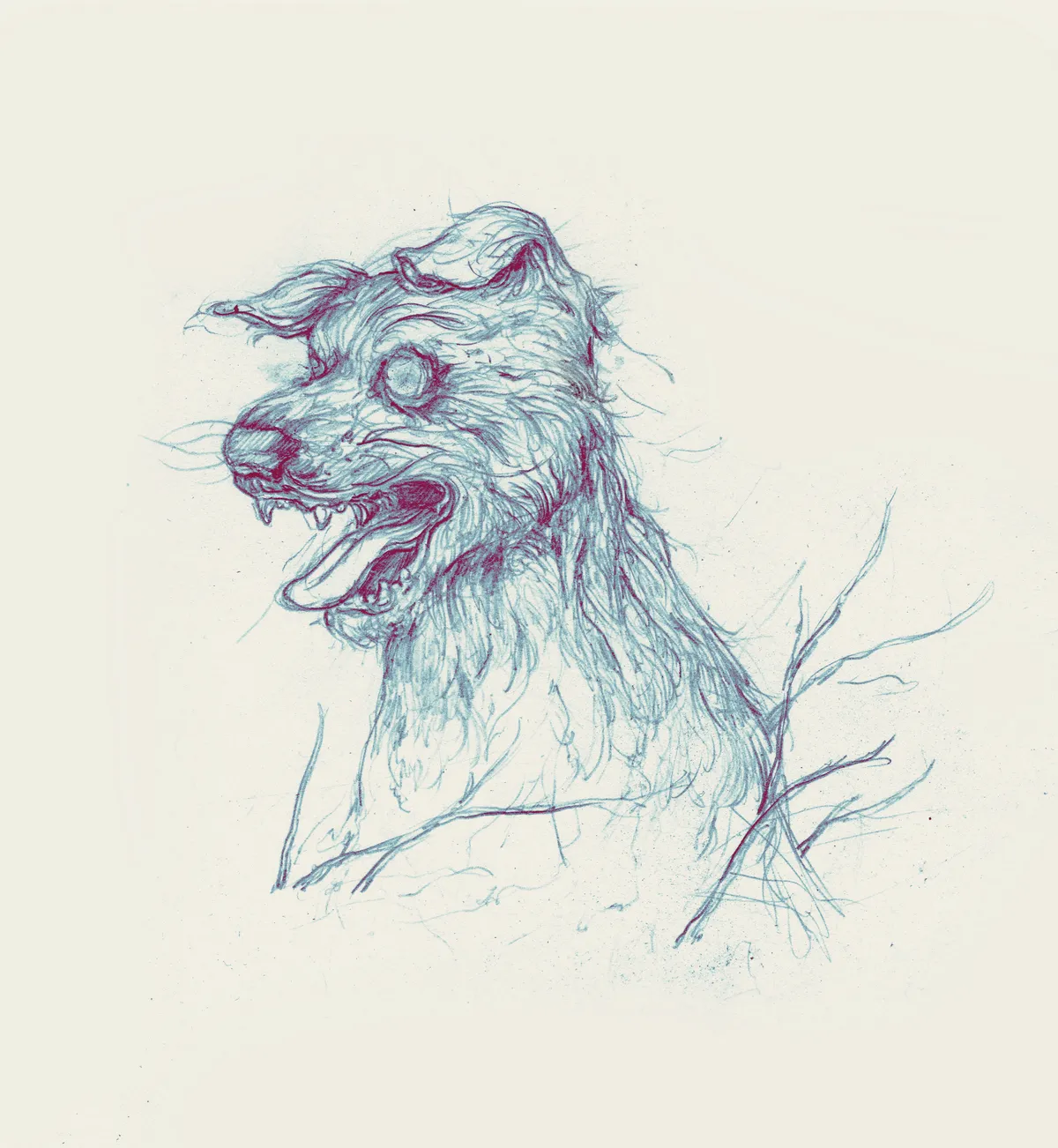
Walking to Boscawen-un to the south, there was a domain of intense glumness and macabre depression that I was hitting at a tangent; as if the summit was ablaze with melancholy and aggressive sadness. It was so profound, I felt I was being ‘warned-off’ the hill top. The message was very clear, though the mechanism by which it arrived remains a mystery.
Of course, anyone with any imagination can be spooked if there are compelling enough circumstances. Yet not long before my experience on Caer Bran, I had slept, or attempted to sleep, in nearby Chûn Quoit – the final resting place of a long-forgotten tribal chieftain – as a volunteer for an experiment in cognitive archaeology. But I failed to run away screaming into the night and left disappointed and completely un-spooked. It wasn’t the piskies keeping me awake, but a large rock digging into my spine.
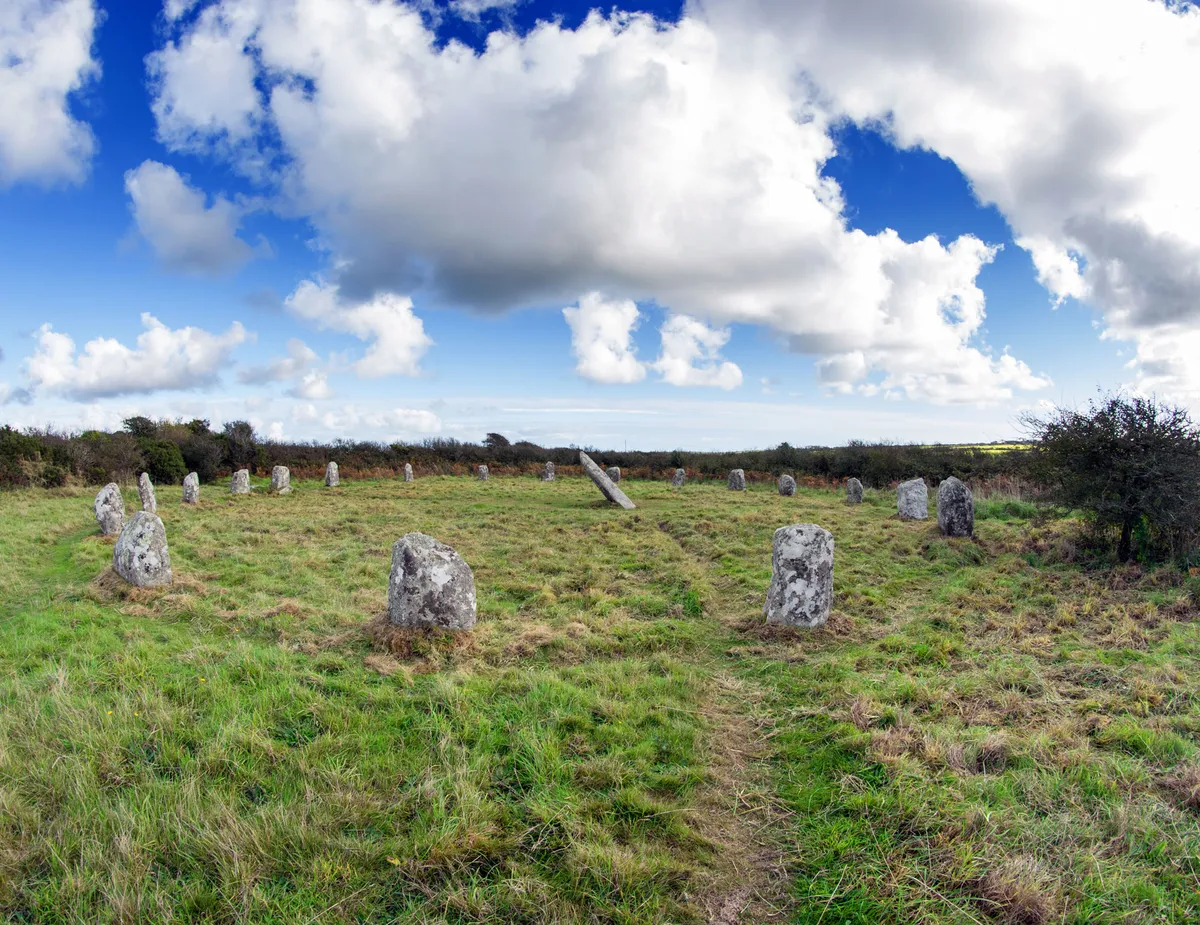
Britain's most haunted places
Britain has a long and often dark history, with our ancient landscapes and buildings telling the tales of our ancestors.
From ancient castles to haunted hills and spooky inns, here is our guide to the most haunted places in the UK, with a look at the history behind each myth and legend, plus discover the most haunted place in Britain.
Whitby Abbey and St Mary's Church, North Yorkshire
A cold wind blows in the fishing village of Whitby. Said to be home to over twelve different sinister specters, this town is not for the faint hearted. Dare you look into the Abbeys well at midnight?
If your heart is pure, the face of St Hilda will appear in the water, but if not beware for the Devil will take you away with him. St Mary's Church presides on the top of the cliff in the shadow of the Abbey; a phantom hearse with four headless horses and a headless driver can be seen to stop in front of the church then race along the cliff before plunging over the edge into the sea. These gothic structures once the inspiration for Bram Stoker's Dracula stand forebodingly over the town.

Isle of Iona, Hebrides
The last resting place of 48 Scottish kings, Iona has a long history and is a significant spiritual centre. Attacked by the Vikings, apparitions of longboats have been reported sailing into the harbour at night.
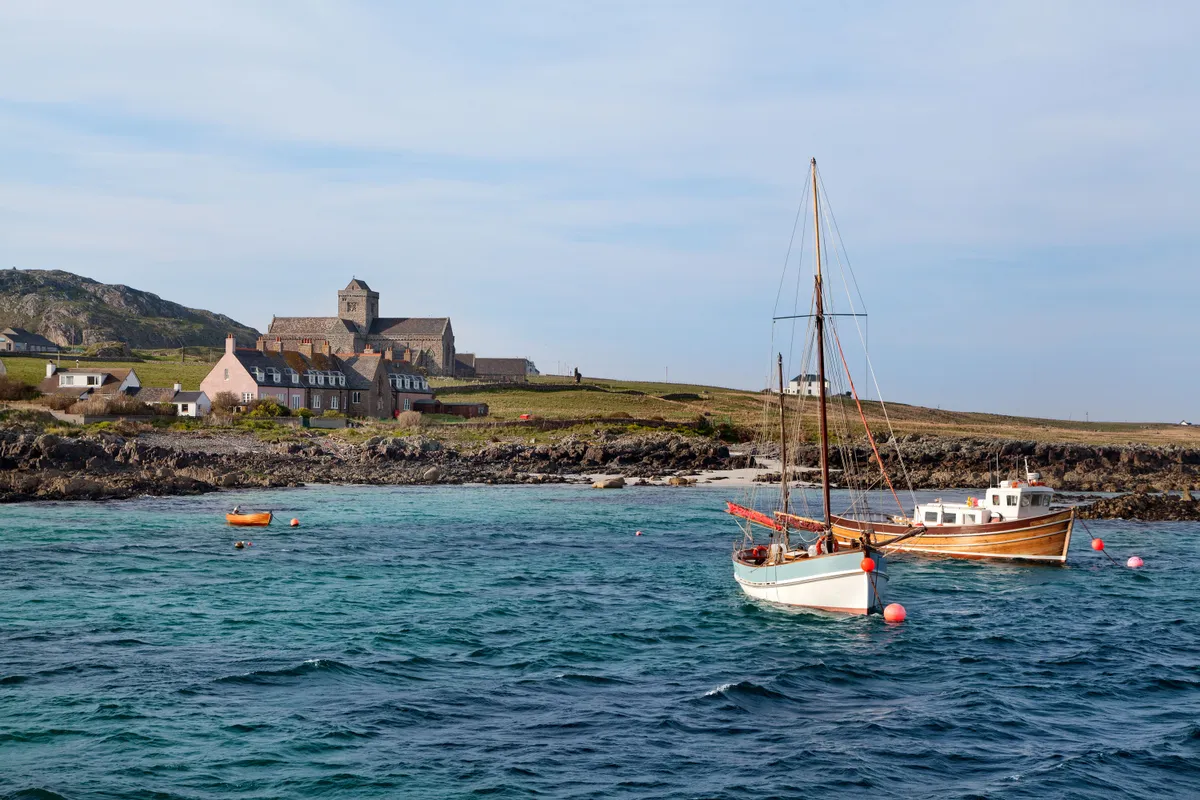
Iona Abbey is located on the Isle of Iona, just off the Isle of Mull on the West Coast of Scotland. It is one of the oldest and most important religious centres in Western Europe./Credit:Getty images
The Battle of Edgehill, Warwickshire
A thousand troops died in the first large battle of the English Civil War, between Banbury and Stratford-Upon-Avon on 23 October 1642. For months after, witnesses reported seeing phantom battles in the skies. Today, screams, the thunder of hooves and the chink of armour are still heard.
